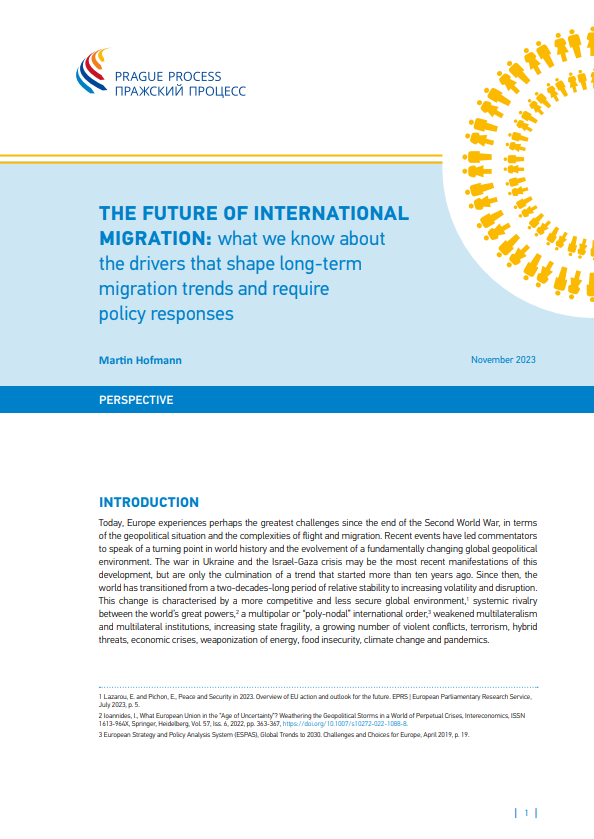Today, Europe experiences perhaps the greatest challenges since the end of the Second World War, in terms of the geopolitical situation and the complexities of flight and migration. Recent events have led commentators to speak of a turning point in world history and the evolvement of a fundamentally changing global geopolitical environment. The war in Ukraine and the Israel-Gaza crisis may be the most recent manifestations of this development, but are only the culmination of a trend that started more than ten years ago. Since then, the world has transitioned from a two-decades-long period of relative stability to increasing volatility and disruption. This change is characterised by a more competitive and less secure global environment, systemic rivalry between the world’s great powers, a multipolar or “poly-nodal” international order, weakened multilateralism and multilateral institutions, increasing state fragility, a growing number of violent conflicts, terrorism, hybrid threats, economic crises, weaponization of energy, food insecurity, climate change and pandemics.
These global shifts pose new challenges for state migration management systems and international cooperation on migration issues. The simultaneous and mutually reinforcing occurrence of the aforementioned factors has already resulted in new migration realities in Europe that are shaped by increasing levels of human mobility - voluntary and forced, regular and irregular - as well as decreasing predictability of the size, directions, and patterns of international migration flows. It can be assumed that these trends will continue to intensify and that migration in its various forms will increase rather than decrease. Governments and other stakeholders are well advised to plan for such developments, while emphasizing that the future of migration can never be accurately predicted. It is not a matter of certainties but of probabilities and plausible scenarios for which migration policy actors should be prepared. This publication by Martin Hofmann aims at contributing to the debate on preparedness in the area of international migration, to present a number of factors that shape the size and structure of migration flows, and to discuss how these drivers might develop in the coming years.
In line with the drivers and megatrends described in this publication, and taking into account how they might develop in the coming years, a plausible scenario for the future of international migration can be outlined as follows:
- The share of international migrants remains comparatively low in relation to the total world population. Due to the projected population growth until 2050, the absolute number of international migrants increases more significantly.
- Intra-regional migration gains in importance, also in the global south, but most flows continue to occur within and to destinations in the global north.
- Legal and labour migration grow along steady trends.
- Conflicts frequently cause sudden and large-scale arrivals in countries neighbouring a conflict but also in regions further abroad.
- Migration remains a central component of geopolitics.
- Demographic change affects high-, middle- and low-income societies, albeit in different ways, and increases the demand for both emigration and immigration.
- Income disparities between world regions persist and even widen, and the prospect of migrating between regions becomes more attractive.
- Labour shortages affect an increasing number of economic sectors in ageing societies.
- New tools and better access to technology, communications and transport support individual migration projects but also facilitate “transnational living” by decoupling core areas of human existence and development like work, learning, interaction, or communication from their spatial roots.
- This notwithstanding, decision-making and execution of individual migration projects is still determined by complex individual and collective decision-making processes and remains embedded in social contexts and existing opportunity structures.
- Politics matters, also in future, but governments and migration management systems must deal with situations that develop faster, have higher impact and are interlocked with a broad variety of other factors and challenges, directly and indirectly affecting mobility and migration.
Read the full publication here in English and here in Russian.
Our Repository

